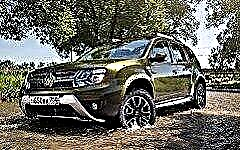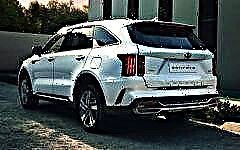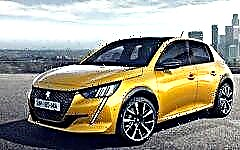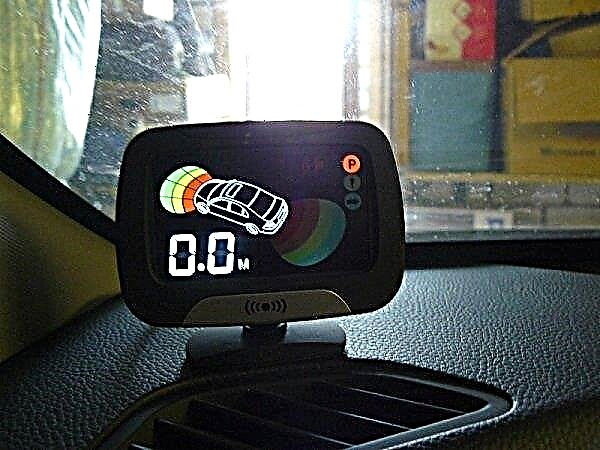
The content of the article:
- Purpose and basic principles of parking sensors
- Performance characteristics
- Using front and rear parking sensors
- Sensor mounting options and display
- Parktronic manufacturers
The modern technological process creates all the necessary conditions in order to help solve any problems facing motorists. These new solutions designed to facilitate the task of safe movement include parking sensors.
Purpose and basic principles of parking sensors

Parktronic (also called parking radar) is a special equipment that warns the driver of an approaching danger or obstacle on the road, be it a large stone, curb, fence or other vehicle.
It is also used by students practicing the art of safe parking, who have not yet overcome the fear of hitting a post on the road, hitting a nearby car, etc.
The main part of the parking sensors are special sensors that are installed on the front and rear of the car. Each side has an average of 2-8 sensors.
The basic principle of operation of this device is the emission of signals that reflect various objects and return them to their original position. From the return time of the signal, you can calculate how far the obstacle is.
The equipment informs the driver that the distance between the vehicle and the obstacle is decreasing. However, cheaper versions of parking sensors will not be able to accurately determine the distance at which an obstacle is located.
Each parking sensor has a beeper - a special signal from a sound device. The beeper emits voice signals at different frequencies when a danger is approaching. Therefore, the closer the danger, the more often the signal will sound. If the signal sounds continuously, it means that a dangerous object is very close to the vehicle, therefore it is necessary to stop urgently.
Performance characteristics

Parktronic can be used at any time of the year, but for this it is necessary to take into account some of their features. Almost all devices can be used at temperatures from -35 to +80 degrees Celsius. It is only necessary to remember that at temperatures below -35 degrees, the parking sensors can lose their original characteristics and fail.
Parktronic may provide incorrect information under the following circumstances:
- If snow, ice or dirt sticks to the sensor;
- When driving a vehicle over rough terrain or uneven road;
- When working in dense snow or rain;
- When trying to park a car in a relatively small area. In such a situation, an echo effect may occur.
Also, when using parking sensors, you need to remember that the device may not work on some objects. This equipment may not detect a chain, a rope, a low fence (less than one meter), the presence of sound-reflecting and sound-absorbing objects. In addition, with the help of parking sensors, you will not be able to recognize pits on the road, open hatches, small sharp objects and other elements that the sensors could not recognize.
Using front and rear parking sensors

The most popular in use are rear parking sensors, which are installed on the rear bumper. Experts recommend installing 3 or 4 sensors for greater safety of movement. The rear parking sensors begin to work at a distance of about two meters to the obstacle.
Parking sensors designed for the front of the car differ from the rear ones with an additional input, with which they are connected to the speed sensor. Just do not forget that the system can turn off if the car is traveling at a speed of 20 km / h. The sensors will be triggered at a distance of 60-80 cm from the obstacle.
The combined type of parking sensors is included in the kit to the common unit, as well as the required number of sensors for installation in the front and rear of the car. These devices are equipped with 2 types of signal beepers, each of which signals the presence of a danger from the front and from the back.
Sensor mounting options and display

Outwardly, most parktronic models are very similar, but they can perform completely different functions. When choosing this equipment, you must remember its main purpose - to provide all conditions for a comfortable car parking without any obstacles.
The installation options for parking sensors depend on the driving experience of the car enthusiast, as well as on his individual needs in terms of parking convenience. The following installation options are distinguished:
- Four rear sensors used by experienced drivers who have a good sense of the parameters of their car;
- Installation of six automotive sensors - four on the back and two on the front. So less experienced motorists who are poorly guided in the parameters of their own car prefer to work with parking sensors;
- Eight sensors (four settings on the front and rear of the car) are preferred by drivers who have little or no driving experience.
There are models of parking sensors that do not have a screen and signal danger only with the help of sound. On the screen of the device, you can see in detail the approaching danger, as well as find out at what distance the obstacle is.
The modern range of parking sensors offers devices with an LED scale or a built-in camera. The second option (with a camera) is more expensive.
Experts advise installing the display in the part of the car where you most often look when parking. A great place would be a rearview mirror.
Parktronic manufacturers

In the modern automotive market, parking sensors from different companies and manufacturers are presented. It is worth giving preference to the products of those companies that have been producing these devices for more than one year and have positive customer reviews.
The most reliable parktronic companies are Flashpoint, Phantom and RedScorpio.
The cost of devices of these brands differs significantly from their counterparts of lesser-known companies. However, the reliability and high quality of work are worth the money.
Conclusion
Modern novice car enthusiasts increasingly trust their safety to parking sensors - they can help them hone their skills in correct and accurate parking. However, you should not completely rely on parking sensors - in any case, this device is not capable of completely replacing a person.











